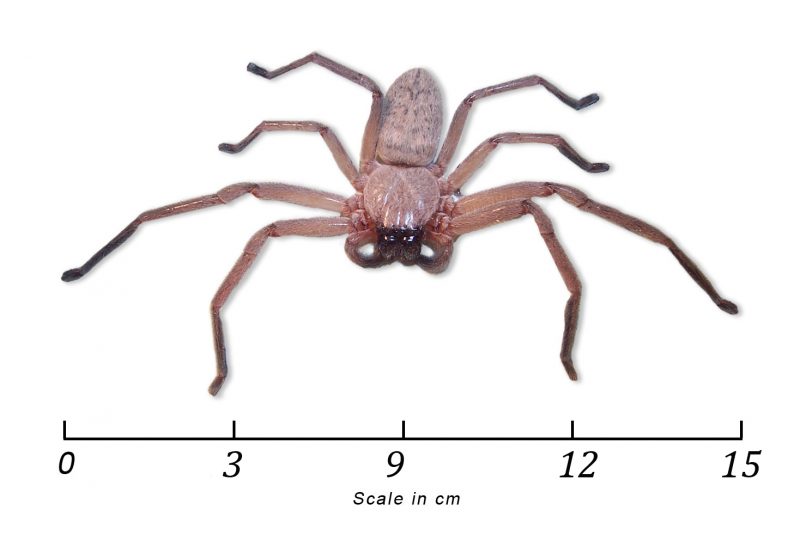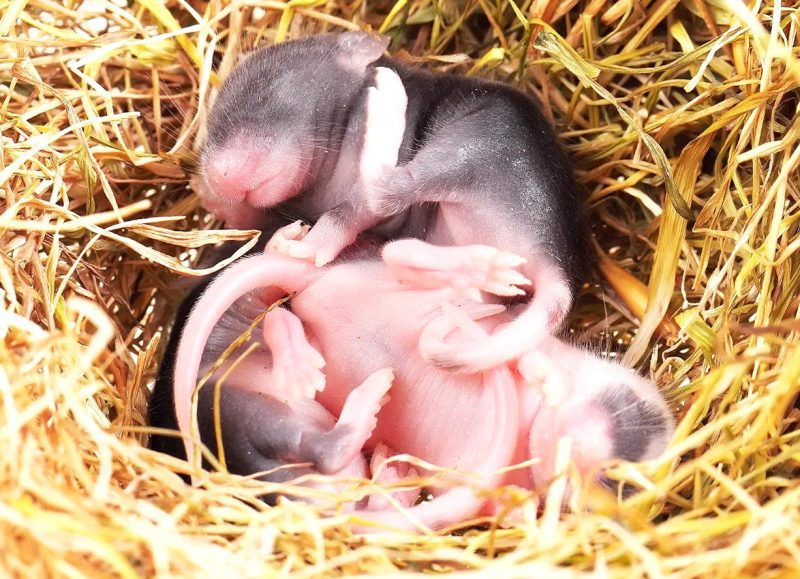-
What Time Of Year Are Termites Most Active?
March 1, 2022
Termites can be dangerous to your home, so it’s incredibly important you’re aware of the early warning signs. This includes…
Termites can be dangerous to your home, so it’s incredibly important you’re aware of the early warning signs. This includes knowing whether or not termites are seasonal. To help, we’ve answered the question, “what time of year are termites most active?” below. And if you have any other questions, please don’t hesitate to get in touch with our expert termite control team.
What time of year are termites most active?
Unfortunately, termites are active year round. While weather changes can affect when termites colonies form, you can’t slow them down once they establish an infestation. So, if you want to protect your home from termites, you need to seek professional pest control advice right away.
A professional termite extermination company will let you know if you have a termite infestation. If there is one, they will start the termite control process and advise you on future prevention methods
Are termites seasonal?
So while the answer to “what time of year are termites most active?” is “all year round, the weather can slightly impact their behaviours. For instance, some species prefer a little more moisture compared to others.
Most dry wood termites, especially subterranean termites, swarm during spring. Then in the summer, damp wood termites are more prevalent. But several species can also swarm simultaneously depending on the weather conditions.
Termites in spring
Since most termites swarm in summer and spring, you should be able to notice signs of termite infestation quickly. During summer, the termites’ activities involve foraging and eating. These seasonal conditions cause the death of many termite workers resulting in a reduction in the workforce. However, the secondary queen steps up and produces plenty of eggs to increase the number of workers.
Termites in winter
Do termites die in the winter? No, they don’t. Missing signs of infestation in the winter does not mean that the termites are dead. The ideal temperature for termites is 23°C, and in winter, the temperatures fall between (2°-10°C).
Regardless of the temperature change, termites need food to survive. During these winter months, they dig deeper underground where temperatures are warmer. They will be hard to find, but they are still active even in the winter.
Termites in autumn
Are termites active in autumn? There’s one southern subterranean species that chooses to swarm in this season from August to November. The winged adults of this species are pale brown and often invade in the late morning. They easily get confused with ants because of their colour and size.
How long does it take for termites to appear?
The combination of an open crack or a damp pipe with fresh wood is the perfect entryway for termites to infest your home. Termite colonies consist of hundreds to thousands. Just within a few days, termites can multiply their colony and infest different areas of your house, causing significant amounts of damage. That’s why it’s crucial you take preventative measures and book an inspection with a professional pest aid service when you suspect any infestations in your house.
How do you know if termites are active?
There are some tell-tale signs of a termite infestation in a house. Below are some of the signs that termites are active in your property:
- Discarded termite wings in and around your property
- Mud tubes around the floor joist, foundation, and support beams
- New damages in walls
- Rotting wood around your property and bugs in the soil
Learn more: signs of termites
What time of year is best for termite treatment?
Since termites can infest your home year round, any time is the best! If you suspect any termite damage or simply want to keep on top of potential pest invasions, we recommend getting a termite inspection.
Pest Aid is here to help
So now you know the answer to the question, “what time of year are termites most active?”, you may be wondering what you can do about it. That’s why we recommend contacting a professional pest control service.
Pest Aid have been helping Australian home owners with pest control for over 25 years. With the latest technology and eco-friendly approved products, we will effectively protect your home against termites. Book a termite inspection with Pest Aid online now.
People also read:
-
How To Get Rid Of Huntsman Spiders
October 3, 2021
Experts in the field may assure you that huntsman spiders pose little danger to humans. However, they do not appear…
Experts in the field may assure you that huntsman spiders pose little danger to humans. However, they do not appear endearing to quite a number of people. Indeed, you may not want them in your home, house, and car. Below are a few useful guidelines on how to get rid of huntsman spiders. But before that, the article describes the size, diet, eating habits, and why huntsman spiders get into your home.
Size And Locations Of Huntsman Spiders

A giant huntsman spider can have a leg span measuring up to 15 centimetres. This is impressive, right? This makes it one of the most enormous spiders you can find in Western Australia. In addition, there are quite a number of species native to Asia, Africa, and South America.
The Diet Of Huntsman Spiders
Huntsman spiders prey on flying insects, crawling insects, and other invertebrates. This includes geckos and small lizards.
The Mating Habits Of Huntsman Spiders
Again, huntsman spiders differ from some other species in their mating habits. The males are usually not attacked by the females after mating. After impregnation, the female lays around 200 eggs in a silken sac it builds. You can find such sacs under rocks or barks of trees but beware; she usually stands guard for a few weeks.
Thereafter, when it is time, the female will open the egg sac. Thus, the little spiderlings are let out. Though they have a pale colour, they soon change to a distinct grey or brown colour in subsequent weeks.
Do Huntsman Spiders Build Nests?
Interestingly, you will not find huntsman spiders building webs or nests. Rather, it wanders about looking for food or mates. Not having a retreat base or a nest is one area where the huntsman spider differs from house spiders. Interestingly, these two other species of spiders, including the redback spider and the white-tailed spider, also display these traits.
Are Huntsman Spiders Harmful To Humans?
Your chances of being attacked by the huntsman are improbable. Though their bite may be painful, they are otherwise not harmful to humans. Another good thing is that they help remove other pests.
However, it is advisable to place them back outside. Huntsman spiders do attack when they are agitated. You may experience some swelling and need some medical aid. For example, their bite may cause vomiting, headaches, and heart palpitations.
More so, there are people who are afraid of spiders. Indeed, such people would prefer getting pest control to rid their homes or offices of huntsman spiders.
Why Do Huntsman Spiders Get Into Your Home?
Huntsman spiders may chase prey or mates through small openings inside your home, cars, or building. Their almond-like bodies allow them to squeeze around small spaces, and pantry moths buzzing around lights may attract them. Likewise, the warm summer months may make them want to avoid the summer heat.
How To Get Rid Of A Huntsman Spider

Have you tried using a broom on a spider? They are pretty fast, aren’t they? In fact, they may even climb right up the broom onto your arms. Indeed, some people would not want that. So, before you start thinking of inviting pest experts, how do you get rid of huntsman spiders?
Use a container and a piece of cardboard
One effective way is to make use of a container and a piece of cardboard. This is quite useful when the spider is on a flat surface such as a wall. Place the jar or container over the spider. Then, slip the piece of cardboard or paper between the container and the wall. Now, you can move outside, place the container down, and let the spider leave.
Use natural oils such as peppermint or citrus spray
Spiders dislike the scent of peppermint, eucalyptus oil, tea-tree, or citrus. Thus, regularly spraying them down likely entrances deters them from coming in. Simply fill a standard spray bottle with water. Then mix it with 15 to 20 drops of the essential oil. Finally, you can spray it down on cracks and corners.
Place nuts in corners
Moreover, go a step further and place a few nuts in selected corners of your home. This includes walnuts and chestnuts.
Clean up your home
Regular clean-up helps in getting rid of huntsman spiders. This includes cleaning and removing cobwebs from your closets, attic, garage, and dark spaces.
Avoid clutter
Clearly, the fewer hiding spots there are, the fewer spiders you will find. Clear out objects such as gloves, cardboard boxes, and general clutter. You may just be surprised to find clothes moths among old clothes. Surely, this can attract huntsman spiders.
Seal off cracks and openings
You can seal off entryways for huntsman spiders. For example, tiny crevices, vents, door and window openings, and loose screens need to be closed off. Sometimes, a foam sealant or caulk can come in useful here.
Reduce excessive moisture
Where there is excess moisture, insects become common. In turn, they attract spiders. Thus, you may add a dehumidifier in places like your basement.
Get rid of other insects
Indeed, spiders will be there when insects like ants, cockroaches, and ticks exist in the home.
Weed out your perimeter
You make it harder for spiders to make it to your home when you do not have vegetation around. This includes shrubs, woodpiles, composts, and even rocks. Furthermore, you may remove plants from the perimeter of your home.
Turn off outdoor lights
Remember that spiders are attracted to insects. In turn, insects are attracted to light. Therefore, you may avoid spiders by turning off bright outdoor lights.
Use a vacuum cleaner
Get those vacuum cleaners working around corners. A plus is you not only suck up the spiders, but you also remove their webs and egg sacs.
Set up a sticky trap
Go hunting with a sticky trap. This means that you set up a non-toxic trap. Usually, the glue traps the spider. Congratulations, you have caught a spider, though not in a web. Now, you can dispose of it. This is like a catch and release process.
Invite a pest inspection and control service
Another quick and effective solution is to invite a professional exterminator or a pest manager. They can advise you on preventive measures. Moreover, they are equipped with the knowledge and experience to handle a spider infestation. You can, therefore, look up to them for residential or commercial spider control.
-
Understanding The Life Cycle And Reproduction Rate Of Mice
August 18, 2021
To have a liveable home, you should rid it of household pests. Pests like mice can be a nuisance if…
To have a liveable home, you should rid it of household pests. Pests like mice can be a nuisance if left to run wild. Mice are destructive little creatures regarded as one of the most invasive species in the world. Their success can be linked to an active life cycle and a high breeding rate. The house mouse is a small mammal with a pointed snout, hairy body, long naked tail, and small rounded ears.
Mice Life Cycle
First, the females experience heat for a period of 4 to 5 days. After mating and getting pregnant, they give birth three weeks later, giving rise to 6 to 8 pups up to 10 times a year.
The Birth And Growth Of A Mouse
Newborns are blind, hairless, and without ears. They gradually start seeing, moving, and developing fur after two weeks. Mothers nurse them for 21 days, during which the pups grow rapidly. By the fourth day, their ears are fully developed. Their hair starts to grow on the sixth day. And on the tenth to the twelfth day, they have a coat of fur.

The pups are weaned on the twenty-first day, with the males moving away from their mother’s territory while the females remain for some time. Around two months after birth, they reach adulthood, whereby they become sexually mature and active.
Mice Reproduction Rate
It seems all mice do is breed. In a year, a female mouse gets pregnant around 5 to 10 times. After getting pregnant, it only takes between 19 and 21 days to give birth.
Mouse Litter Size
On average, a litter has between 6 and 8 pups, meaning one female mouse can produce at least 30 babies in a year. After giving birth, the female can mate immediately afterward, with a new litter coming up within 25 days. Worse, a female baby mouse matures in 6 weeks and begins reproducing, ensuring continued mice breeding. Again, the indoor environment promotes more reproduction. And within a short time, a mice infestation can become significant. Females continue being reproductive until they die.
Life Span Of Mice
Mice live for about 12 months outdoors compared to around 2 to 3 years indoors. The difference in lifespan is because outside mice are preyed on by large birds. It can also become too hot or too cold outside. Inside the house, mice are not exposed to predators and harsh weather conditions. The obvious implication is that indoor mice have a longer time to cause problems in your home. Add to that their high rate of reproduction, and you can see how problematic mice can be.
The Dangers Of Mice
Be wary of mice in your home because they can lead to the following adverse effects:
- They spread lice and diseases.
- They damage stuff through gnawing and scratching.
- They breed future generations that ensure the infestation persists.
- They eat up your food and contaminate it.
- They chew on electrical wires and cords, likely causing appliance failures or even starting fires.
- Their nests in air ducts cause unpleasant odours indoors.
Signs Of Mice Infestation
Mice can be quiet and manage to stay hidden for quite a while. Below are signs to uncover them:
- Sights of mice
- Scratching sounds
- Scratched or gnawed objects and surfaces
- A pungent ammonia-like scent
- Faeces and urine stains
- Grease marks on walls caused by oil and dirt on the hairs of mice
- Footprints around less than half an inch long
- A nest made of soft materials like newspaper
How To Get Rid Of Mice
Here are various proven methods of eradicating mice:
Block Entryways
Use steel wool or any other kind of caulk to seal cracks and holes leading into your house, no matter how tiny they are. Target openings in walls, vents, utility pipes, and the foundation. Sealing off entry points prevents access by mice.
Use Mouse Traps
Lay several traps around your house. Use a mix of glue traps, wooden traps, bait traps, and multiple-capture traps. Using multiple traps ensures even those mice that are familiar with a specific type of trap are caught.
Load up the traps with mouse baits like peanut butter, dried fruit, chocolate, or the kind of food they eat up in your home. You can change the bait if it does not seem to be working.
Place the traps in areas where you see signs of mice like droppings. Make sure the traps are directly in the path of mice so that they run directly into the bait rather than running over it. Change the trap locations after every two days.
Use Bait Stations
A bait station is a poisonous meal wrapped in plastic, paper, or cellophane that mice can gnaw through. When mice eat the bait, they eventually die. The downside of this method is that it is not safe for pets and kids.
Good Sanitary Practices
Clear away food sources such as crumbs by vacuuming rooms and wiping down surfaces associated with cooking and dining. Mice can live on 3 to 4 grams of food a day and are easily attracted to scraps. Do not leave leftovers in the open by putting them in airtight containers. Go a step further and secure the trash can. And remember to remove debris and possible nesting areas.
Get A Cat
Cats are natural predators of mice. Get a cat to help scare away mice from your house.
Apply Peppermint Oil
Mice hate the smell of peppermint oil, which is one of the best mouse repellents. Dip cotton balls in the oil and strategically place them where mice are likely to pass through.
Contact Pest Control Specialists
Professional pest controllers have adequate means of ridding your home of mice. They put the right products and strategies in action to eliminate existing mice and prevent future infestation.
Bottom Line
The presence of mice in your home can cause health, financial, and even social problems. Knowing the life cycle and reproduction rate of mice is the first step in determining how to get rid of a mice infestation effectively.
